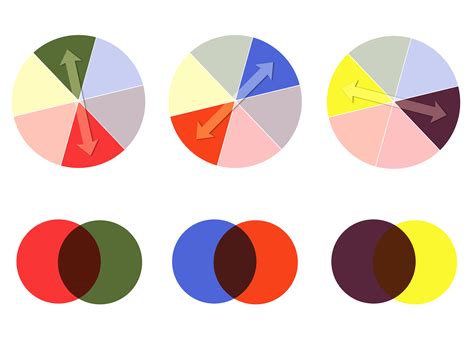How to Produce Brown Color: A Comprehensive Guide for Artists and DIY Enthusiasts
Brown. A seemingly simple color, yet achieving the perfect brown can be surprisingly complex. Whether you're a seasoned artist mixing paints or a DIY enthusiast tackling a home project, understanding how to produce brown opens up a world of creative possibilities. This guide delves into the various methods for creating brown, from mixing primary colors to using natural ingredients.
Understanding the Basics of Brown Color
Before diving into specific techniques, let's establish a fundamental understanding. Brown isn't a primary color; it's a secondary or tertiary color, meaning it's created by mixing other colors. The beauty of brown lies in its versatility; countless shades exist, ranging from warm, reddish-browns to cool, greyish-browns. This versatility is precisely what makes mastering its creation so rewarding.
Key Colors for Mixing Brown:
- Red: Adds warmth and depth. Different shades of red will influence the final brown hue.
- Yellow: Contributes to the overall lightness and brightness of the brown.
- Blue: Introduces coolness and can create darker, more muted browns.
- Black: Used sparingly to deepen the shade and increase saturation.
- White: Lightens the brown and creates variations in tone.
Methods for Producing Brown Color
Method 1: Mixing Primary Colors
This is the most common method. The basic recipe is a combination of red, yellow, and blue. However, the precise ratios will significantly affect the resulting shade.
- Warm Brown: Start with more red and yellow, adding a touch of blue to balance.
- Cool Brown: Emphasize blue and add smaller amounts of red and yellow.
- Muted Brown: Include a small amount of black to deepen the shade.
- Light Brown: Incorporate white to lighten the overall color.
Experimentation is key! Don't be afraid to experiment with different ratios of red, yellow, and blue to achieve your desired shade. Start with small amounts and gradually add more until you reach the perfect brown.
Method 2: Using Secondary Colors
Alternatively, you can mix secondary colors to create brown. For instance, combining orange (red + yellow) and blue, or green (blue + yellow) and red will produce brown variations. This method provides a different starting point for achieving unique shades.
Method 3: Utilizing Natural Ingredients
For a more earthy and organic approach, explore natural ingredients:
- Coffee grounds: Produce a rich, dark brown pigment suitable for paints or dyes.
- Cocoa powder: Offers a warm, reddish-brown hue.
- Walnut shells: Can be crushed and used to create a brownish-gray pigment.
- Clay: Different types of clay offer varying shades of brown.
Remember to experiment with the concentration of these natural ingredients to achieve the desired depth of color.
Tips for Success:
- Start small: Begin with small amounts of each color to avoid wasting materials.
- Mix gradually: Add colors slowly and thoroughly mix before adding more.
- Use a palette: A palette provides a clean surface for mixing and allows for easier color adjustments.
- Test your color: Apply a small sample of your mixed brown to a test surface to ensure it matches your vision.
- Document your mixtures: Note the ratios of colors used to replicate your successful brown shades later.
Conclusion
Producing brown is a journey of experimentation and discovery. By understanding the fundamental principles of color mixing and utilizing the techniques outlined above, you’ll unlock the ability to create countless variations of this versatile color, perfectly suited for your artistic or DIY endeavors. So grab your paints, natural ingredients, or whatever you're working with and start exploring the many faces of brown!
